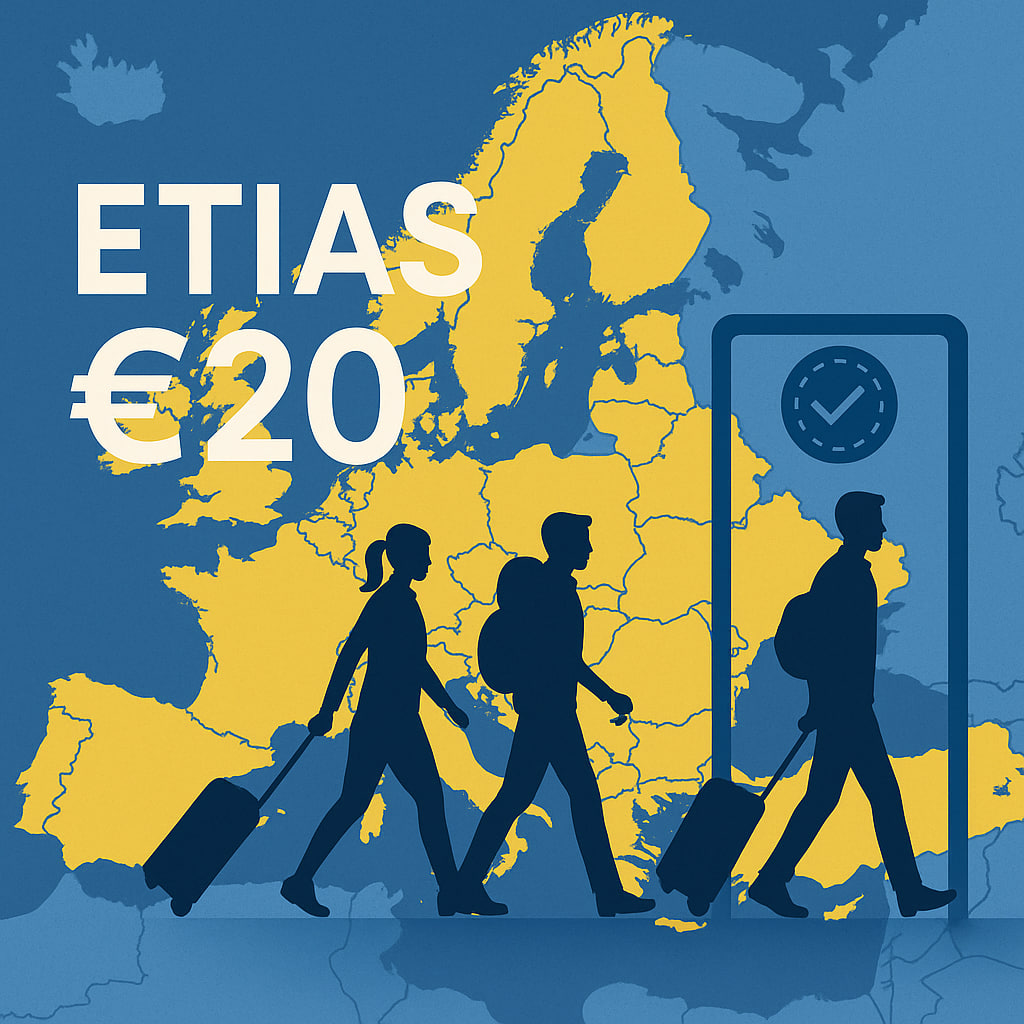
Europe. ETIAS fee set at €20 as EU prepares for 2026 launch
ETIAS fee 20 euros — this phrase will soon define the way millions of travelers plan their European trips. Starting in 2026, citizens of visa-exempt countries, including Americans, Canadians, Australians, and Britons, will be required to obtain travel authorization to enter the Schengen Area. What once felt like a borderless journey will now come with a price tag and a digital checkpoint.
Key Takeaways
-
ETIAS fee 20 euros confirmed: Travelers from visa-free countries must pay for authorization.
-
ETIAS launch in 2026: New system reshapes travel rules across Schengen Area.
-
Authorization valid for three years: Covering multiple entries into the EU.
-
ETIAS aimed at security: Designed to screen travelers before arrival.
-
Impact on global mobility: Millions of tourists face new requirements.
What is ETIAS?
The European Travel Information and Authorization System (ETIAS) is not a visa, though it resembles one in spirit. It is an electronic travel authorization, designed to pre-screen travelers who previously entered Europe without any prior checks. The European Union argues this system is about safeguarding its borders while maintaining mobility for visitors.
The €20 Fee Explained
At the heart of the new rule is the €20 fee. For families, frequent travelers, and budget tourists, this might seem modest. Yet, multiplied by millions of applications, it becomes a significant revenue stream. More importantly, it symbolizes a shift — travel to Europe is no longer entirely “free” for visa-exempt nationals.
A Digital Gatekeeper
ETIAS will be valid for three years, covering multiple trips, as long as the traveler’s passport remains valid. Applications will be processed online, with approval expected in most cases within minutes. However, for some, it may mean delays, additional checks, or even denials. The system is less about convenience and more about control.
Why Now?
Europe has been grappling with security threats, irregular migration, and political pressure to tighten borders. ETIAS emerges as a compromise: it doesn’t shut doors but ensures every visitor is checked against security databases. On paper, it looks like a rational step. In practice, it adds another layer of bureaucracy for ordinary people whose only aim is a holiday in Paris or Rome.
Impact on Travelers
For a Canadian family planning their first trip to Italy, or an American student heading for a semester abroad in Spain, ETIAS is an added cost and an administrative step. For business travelers making frequent short trips, it becomes a repetitive reminder of Europe’s new rules of entry.
Opinion
In my view, ETIAS is less about the money and more about the message: Europe is no longer as open as it once was. I am compelled to say that while security is vital, the creeping bureaucratization of travel risks undermining the very idea of a borderless Europe. Freedom of movement has always been the continent’s pride. Now, that freedom is hedged by fees and forms.
Conclusion
ETIAS fee 20 euros may appear small, but its impact will be large. For millions, it is the price of access to Europe. For the EU, it is a tool of control wrapped in the language of security. As 2026 approaches, travelers worldwide will have to adapt to a new reality: Europe welcomes you, but only after you pay and pass the digital gatekeeper.
#Europe
Source – schengenvisainfo.com
